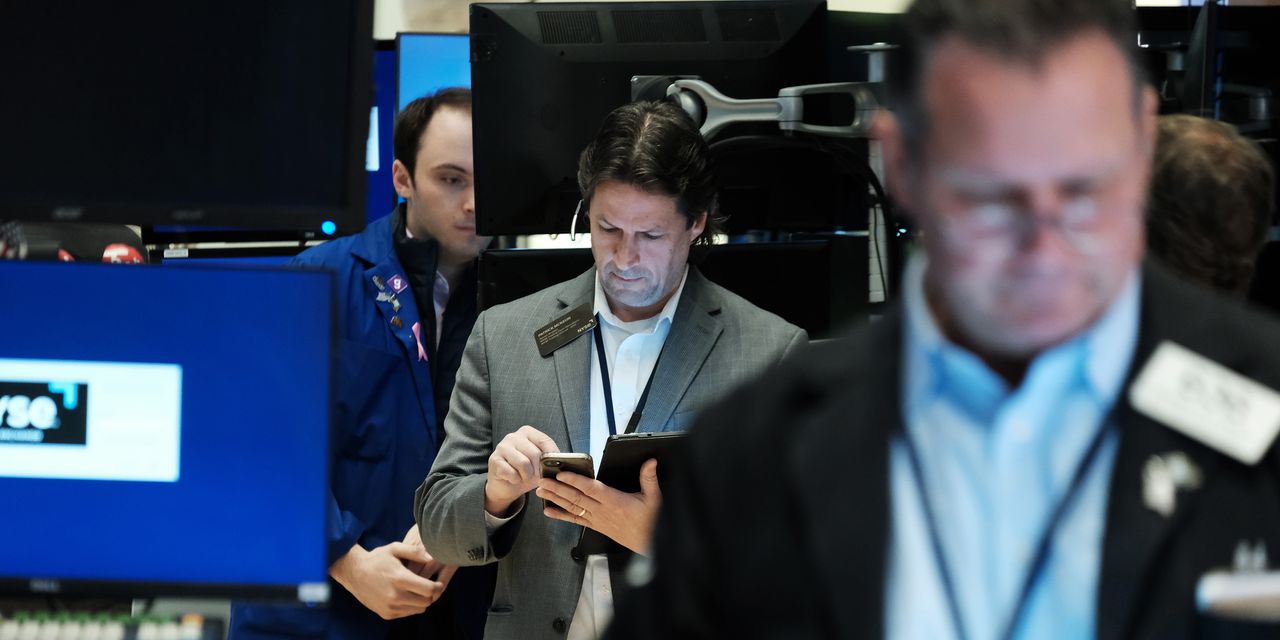At a glance it looks like the stock market is having a strong year with the S&P 500 up about 8%, but those gains have been driven by Big Tech stocks that are doing all the heavy lifting.
Apple
(ticker: AAPL),
Amazon.com
(AMZN),
Meta Platforms
(META),
Alphabet
(GOOGL),
Microsoft
(MSFT),
Nvidia
(NVDA), and
Tesla
(TSLA) are up between 29% and 99% for the year.
Smaller names, meanwhile, have struggled. They also look cheap—-and it may be time to take a nibble.
Big Tech has benefited from lower long-dated bond yields, which make future profits more valuable—and the growing companies are still valued on the basis that a bulk of their profits will come many years in the future. Plus, their first- quarter earnings reports were strong, getting a boost from product enhancements using artificial intelligence.
The resulting gains have brought the
S&P 500
higher because it is weighted by market value. These tech names amount to almost $10 trillion, or just under a third of the entire index.
But for double-digit gains of such large stocks to have resulted in mere single digit increase for the S&P 500 means most other stocks haven’t been so fortunate. The
Invesco S&P 500 Equal Weight ETF
(RSP), which weights each stock in the index equally and therefore shows the movement of the average stock, is about flat for the year.
“Market gains continue to be dominated by uber-caps, masking the fact that 48% of S&P 500 member stocks are down year to date,” wrote Chris Harvey, chief U.S. equity strategist at Wells Fargo, before the market opened Friday.
Performance is even worse for the S&P 600 small cap index, which is down about 3% this year.
To be sure, financials, the largest sector weighting in the S&P 600 and accounting for just over a fifth of it, have gotten crushed this year, dragging the index lower. Regional banks have seen billions of depositor dollars walk out the door as people flock into higher-yielding money-market funds, causing liquidity problems at many banks.
Still, other small-cap stocks aren’t exactly performing handsomely. The industrial sector on this index, for example, has only gained about 4% this year, a paltry return relative to the S&P 500 and its heavy hitters.
That isn’t a coincidence. Higher interest rates have already begun to stress the economy, and now banking problems are expected to further pressure the amount of lending and spending. Don’t be fooled by the S&P 500’s performance, which is covering up what has been largely a tough equity market this year.
But that could eventually present opportunity outside of Big Tech. Small-caps do look cheap. The S&P 600’s aggregate forward price/earnings multiple is just under 13 times, almost 30% below the S&P 500’s just over 18 times, according to FactSet. That is a massive discount. Sometimes the small cap index trades at a slight premium to its large-cap counterpart, but even in times of economic stress, it hasn’t traded at such a wide discount. In March of 2020, its multiple was only 25% below the S&P 500.
Still, buyers beware. Small cap valuations are getting held back because earnings are still at risk. Analysts have already cut earnings estimates for the S&P 600, in aggregate, in the past year, according to FactSet. But the concern is that more cuts are on the way, given the economic issues.
Now might be the time to nibble on some small cap names. Just don’t gorge.
Write to Jacob Sonenshine at [email protected]
Read the full article here




